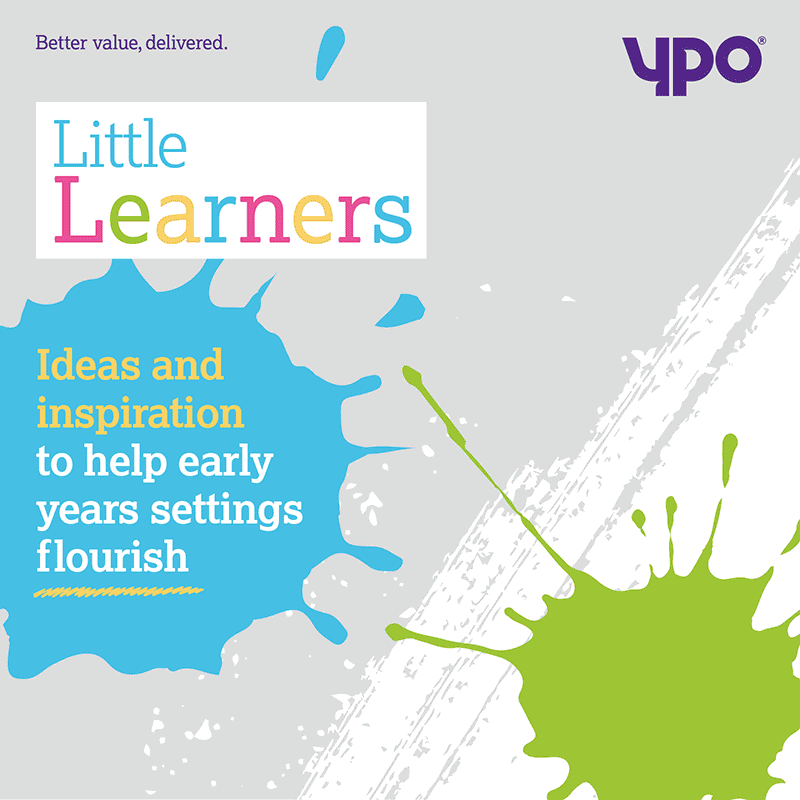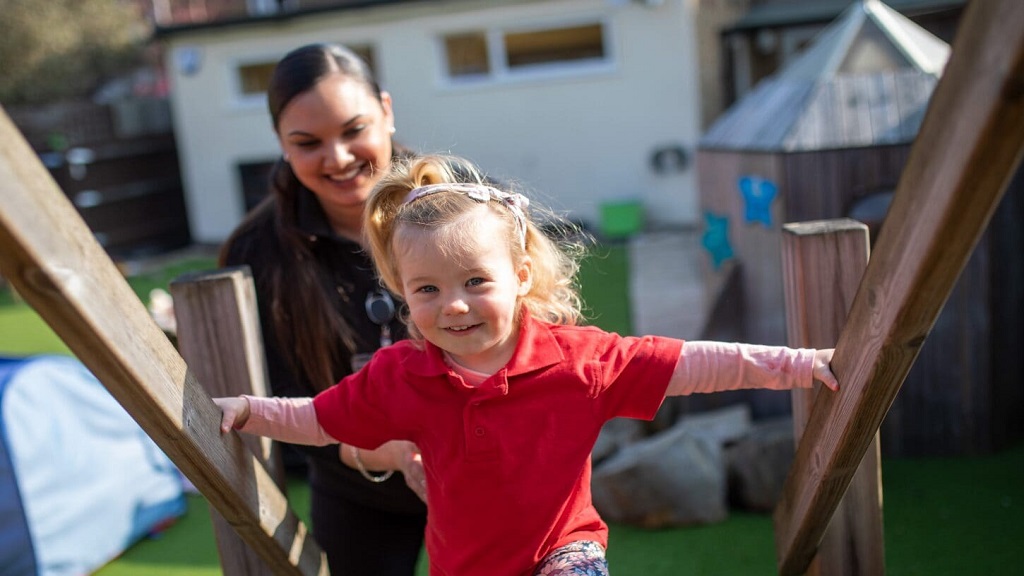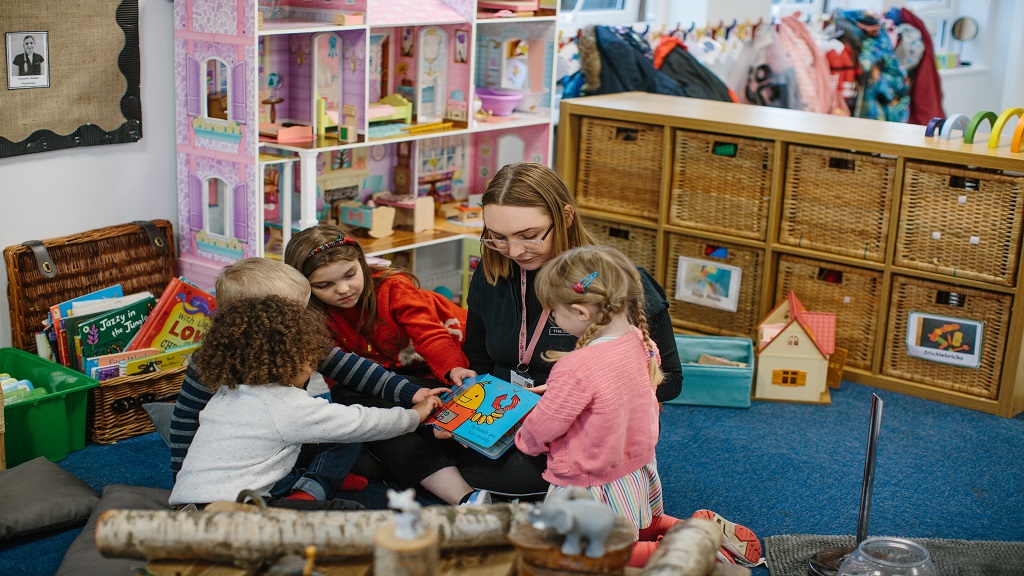Family First are big advocates of team members completing apprenticeships and learning while they earn, with more senior staff now…
Four steps to developing an effective wellbeing strategy
The pandemic has shaken our lives but at the same time has exposed what is important to us. It has also changed the workplace culture and as we move to a post pandemic world, we have seen a shift in what people want and need from work. Linda Baston-Pitt, chief exec PurpleBee Learning shares her insights.

Leaders will need to adapt to the new status quo and at the same time will be required to deal with ever-increasing wellbeing needs of children, families, and staff within their settings, whilst also having to address the decreasing number of potential new recruits coming into and leaving the sector.
We recently conducted a short survey with early years staff on our wellbeing hub to find out what their main priorities at work were. We had amazing feedback with over 300 people responding to the survey.
If we look at what the results told us, the bottom line is that if we want children to flourish, we need to encourage staff to value their own wellbeing as well as the wellbeing of the children. This supports a recently published report by the Anna Freud centre that highlights the need to put Staff wellbeing ‘at the heart’ of nursery settings.
But where does wellbeing start? And how would you describe what a supportive environment looks like?
Wellbeing starts with great managers, a supportive culture and an understanding that wellbeing is not down to the individual it’s a collective shared, responsibility. Wellbeing isn’t something you ‘do’ to people or add to a manager’s workload, but something that is part of everything we do throughout the day. It also must be contextually appropriate for each setting and for the staff within it. Wellbeing cuts across many areas of our lives.
Our wellbeing experiences and activity happens in an interconnected web of relationships and on many different levels. As well as considering our individual wellbeing we must also consider the wellbeing of our team and of our organisation and how each of these can influence and impact on our work. What’s becoming obvious is that most health and wellbeing strategies tend to centre on one aspect of wellbeing. Leaders and managers need to think about how to develop a holistic approach that fosters physical next to mental wellbeing as well as social, emotional and career wellbeing of their staff.
So, what practical steps can we take to improve wellbeing? The good news is that wellbeing is a skill that we can all learn and model and like any skill it needs to be intentional, and it needs to be practised every day. Our role as leaders is to create the conditions for wellbeing by cultivating an environment that enables everyone to thrive but for us to do that, we need to shift our focus to a whole person and whole setting approach.
Working with a nursery group recently to support them in developing their wellbeing strategy we started the session by asking four important questions:
Do we feel safe in our teams?
Get to know your people well, give staff a voice and involve them in the decisions that affect them. That way you get to the core of what wellbeing means to the individual and the team. If we want to recruit and retain the best people wellbeing can’t be just an add on, we need to embrace wellbeing as a mode of living & working so that it becomes a central part of all we do. Find ways to Integrate healthy living into your pedagogical practices. Share ideas and practical solutions about how to link health and wellbeing activities to learning areas within the curriculum. It’s wonderful that the word ‘wellbeing’ appears 38 times in Birth to 5 Matters, my advice would be to embrace all it has to offer!
Are we in a team or workplace that is supportive bringing out the best of each person each day?
We know that wellbeing and learning are inextricably linked. Just as children can’t learn if they don’t feel safe or happy this is no different for the people we work with. Meaningful work is one of the most top cited factors when it comes to job satisfaction and is linked to better staff retention, higher levels of engagement and reduced absence, but it’s also one of the top reasons that people are leaving sector because they’ve lost their passion and purpose. Research shows that people thrive having clear goals. Enabling staff to grow and develop by investing in high quality CPD is crucial to keep people excited, motivated, and engaged.
Are we putting our values at the core of everything we are doing as an organisation?
Start with the ‘why’ rather than the ‘what’ of your wellbeing strategy so that it remains relevant and meaningful to everyone. Wellbeing is a bit like Lego you must build the foundations first, then add the building blocks; just make sure they stick! Then as your confidence grows and everyone has a solid base line knowledge of what health and wellbeing means not only to their setting, but also to them as individuals you can then start innovating and thinking outside the box. Remember that adapting to the changing needs of the organisation takes time even more so now, so be willing to do things differently and to see things differently.
How do we know if what we are doing is making a difference?
If you treasure it, measure it. One of the most important things is to find your starting point by carefully auditing and evaluating wellbeing. This enables you to benchmark and prioritise the wellbeing needs of your setting so that you can target resources directly to where they are needed. Involving the whole team in assessing the settings strengths and areas for improvement empowers staff to not only lead wellbeing change initiatives but also in taking charge of their own health and wellbeing needs.
If you want to get people on board involve them right from the start and find creative ways to share your wellbeing strategy so that it makes sense to people and that they can articulate; What does it mean to me, the team, and the organisation. Share the areas of wellbeing that you’re working on and celebrate your strengths and where you’re doing well. The goal is to build and maintain a thriving early years setting, one where staff feel good and are able to do well. When staff enjoy coming to work and feel that their contributions are recognised, so their level of motivation and engagement rises. Research suggests that flourishing and engagement go together so if you want to attract and retain staff, your wellbeing strategy should create the conditions for people to flourish as well as providing support for those who are struggling.
Getting your health and wellbeing strategy in place is within reach despite the current forces working against you. The change is doable, but you need to commit to the process.
Latest Features
NMT takes the temperature of the early years market and offer tips for marketing, launching a new nursery, and utislising…
In this leadership series, NMT speaks to Gareth Degenhart, founder and managing director, The Lime Trees What has been your…




